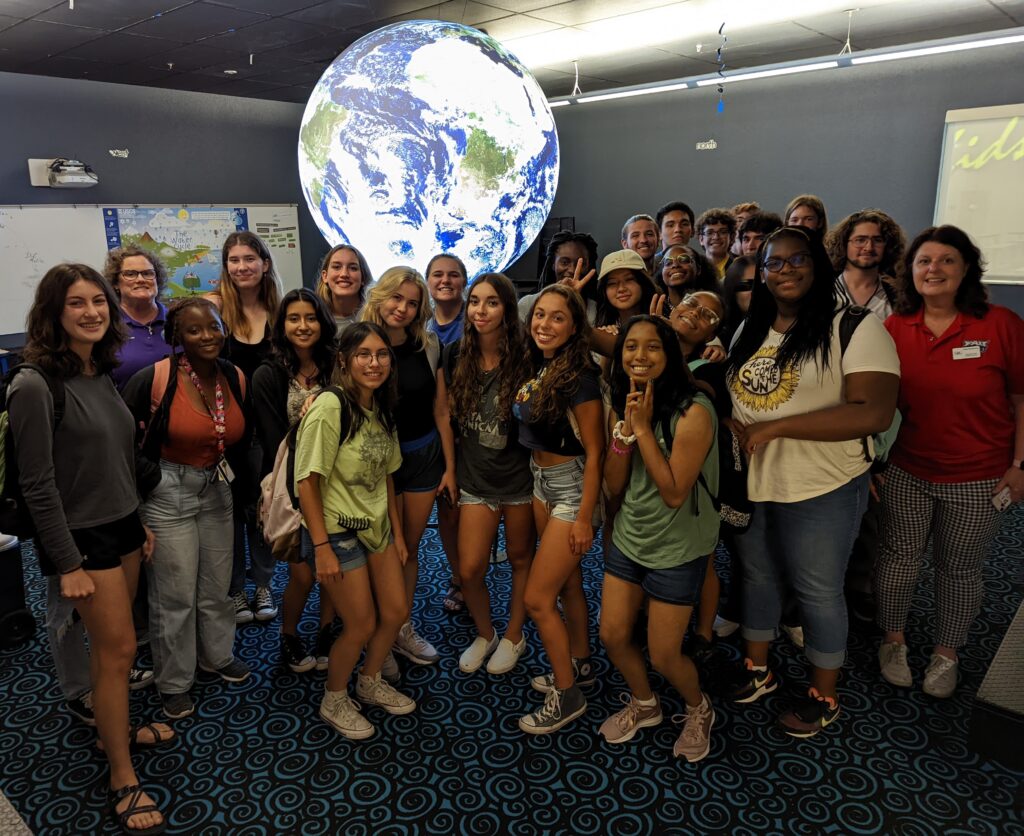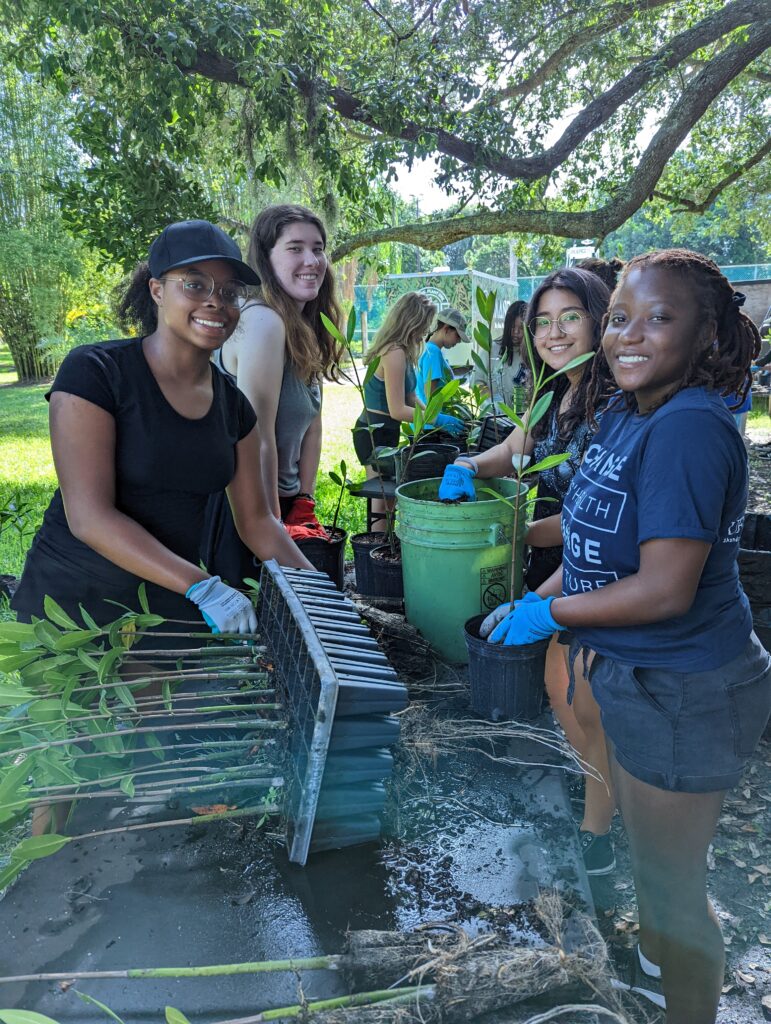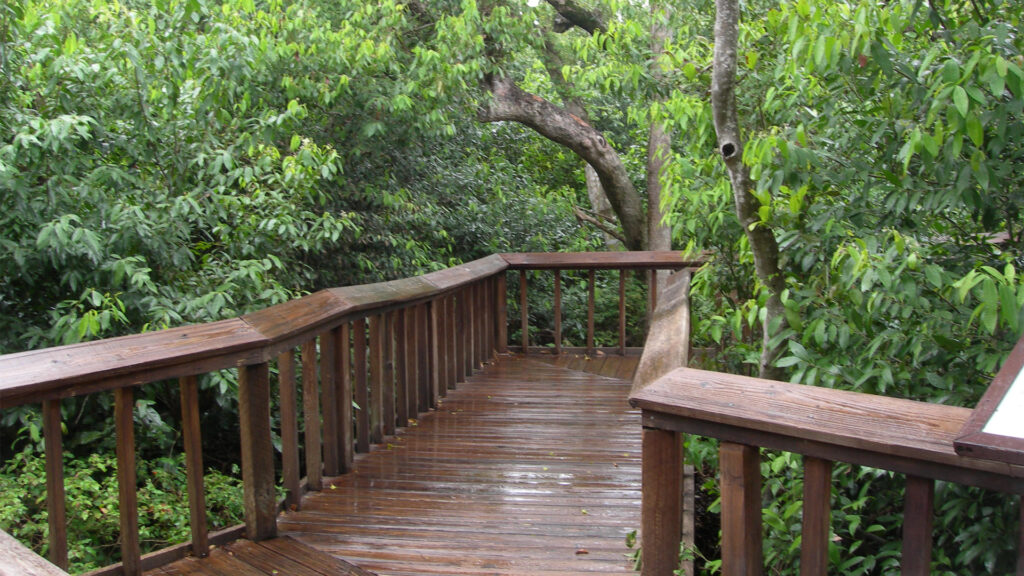By Morgann Rhule
From Jupiter to the Florida Keys, South Florida nature centers play a proactive role in educating people on the region’s important environmental issues.
Visitors from school children to retirees are taught – through talks, programs and exhibits – about endangered species, marine pollution, beach litter, the value of wetland and upland wildlife habitat, and the problems caused by invasive plants and animals, among many other things.
At some, they also learn about the complicated topic of climate change.
Climate change and its impacts can be a depressing subject for people – too “gloom and doom,” said Anne Henderson, director of education at the Florida Atlantic University Pine Jog Environmental Education Center in West Palm Beach. As a counter to that, Pine Jog features a climate change program operated under a three-year grant from the National Oceanic and Atmospheric Administration that is more “hope-based,” she said.

“When people are paralyzed, that’s not helpful, so you have to kind of inspire hope,” Henderson said.
Called Climate READY (Resilience Education & Action for Dedicated Youth), the program’s mission is to empower high school students to become more knowledgeable about the environment and foster them to become strong advocates for climate change action within their communities.
It operates through a structured three-semester framework. Students attend learning sessions in the initial semester and meet with climate activists. The second semester involves the application of their knowledge as they take on the role of educators, teaching younger children in after-school programs.
Transitioning into the third semester, the community semester, participants actively venture into their communities. During this phase, they share their acquired knowledge through presentations and storyboards at local festivals, ensuring a dynamic and comprehensive approach to community engagement.
Empowering young people makes them “agents of change,” said Rachel Wellman, coordinator of education and programs at Pine Jog. “So not to be stuck in this, ‘What can I do?’ ”
The environmental center shares a campus with Pine Jog Elementary School. Any new programs developed by the center are sure to make its first impacts with the school and its students.
At the Gumbo Limbo Nature Center in Boca Raton, a 20-acre preserve tucked off State Road A1A between the Atlantic Ocean and Intracoastal Waterway, there is no specific programming focused on climate change, but it is woven into various educational activities there, according to Leanne Welch, Gumbo Limbo’s manager since 2016.
The nature center staff addresses aspects of climate change during daily aquarium talks, during guided tours that “focus on the impacts of changing climate and sea level,” and during summer sea turtle nesting walks and talks, Welch said.
She said one specific exhibit, created by the University of Florida, is geared specifically to climate change: a series of informational panels on sea-level rise.

Since 1984, Gumbo Limbo has been known for sea turtle conservation and marine life research. “Our mission is to inspire stewardship in coastal and marine ecosystems,” Welch said. “So that mission is a focus in every single program we have here.”
One such program, which aims to reduce plastic and other ocean litter, is “Don’t Splash Your Trash.” Welch said that is “something we tell everyone — little tiny changes that everyone can do that make a huge difference.
“Students learn best when they are doing science and not learning about science,” she said.
One of the programs Gumbo Limbo holds daily at 12:30 p.m. is a live feeding of the inhabitants of its outdoor marine aquarium. It is led 2-3 times a week by Hal Jackson, a retiree and volunteer for the last five years who decided to put his biology degree to good use.
“(There) is so much opportunity to educate people about the wonders of nature … amazing work can be done,” Jackson said.
Before starting the feeding, Jackson has a presentation and makes a call to action.
“There was a time when reducing, reusing and recycling plastic was sufficient in protecting the environment and the animals living in it,” he said. “Sadly, that’s no longer the case. The situation is so dire now that it requires all of us to reduce the usage of single-use plastic.”
Sharing the grounds of Gumbo Limbo is the FAU Marine Lab, established in 1990. Visitors can access the lab from a viewing gallery above and “also see the ongoing research into how hotter summers are impacting sex ratios of sea turtles born on our beaches,” Welch said.
“What kinds of turtles are those?” asks a visitor peering down on a recent day at the sea turtle enclosures, where student volunteer Gael-Lynn Laguerre is standing and promptly identifies the three distinct sea turtle species the center rescues and rehabilitates.
Laguerre is involved in the Marine Sea Scholars program, where she writes the monthly marine lab newsletter and takes care of the loggerhead sea turtle hatchlings held in tanks. The FAU marine lab and nature center “are two separate entities, but they do collaborate” on marking sea turtle nests on the beach, she said.
Local schools make treks to Gumbo Limbo for science-based field trips and visit the FAU lab, she added.

Students – from elementary to high school – also visit the Okeeheelee Nature Center within Okeeheelee Park, which offers educational programs to the public.
A program for kindergarten and first graders focuses on local birds and butterflies. Second and third graders can participate in a program that educates them about animal homes and habitats. Additionally, a specialized raptor program is designed for fourth and fifth graders.
For high school students, the nature center has an OkeeTeen program started by manager Emilie Travis.
“The goal is to have students ages 15-17 who want to spend some Saturdays, or time after school, start to cultivate skills in animal husbandry and learn a little bit more about conservation efforts and that public education side of things,” said Elise Pullen, a staff naturalist and volunteer coordinator for the center.
“After one year (in the program), they do a project presentation, and they get to research any topic they find interesting … so looking at the impacts of climate change is one of those things that our students will take a close look at,” she said.
According to Pullen, these programs aim to “form that emotional connection” with nature for young people so they will be more concerned about wildlife.
“The whole idea is to start introducing Florida native species and get them engaged and start building that environmental stewardship from a young age,” she said.
These nature centers are just some of the few in South Florida that are urging individuals to move beyond worry and concern and make some actionable changes.
“I think it’s super important for young people to pay attention and learn more about what they can do and how it’s impacting them in their environment,” Laguerre said. “It’s something that we’re going to have to deal with regardless in the future.”
Morgann Rhule is a junior majoring in journalism at FAU. The Invading Sea is managed by the FAU Center for Environmental Studies.
If you are interested in submitting an opinion piece to The Invading Sea, email Editor Nathan Crabbe at ncrabbe@fau.edu. Sign up for The Invading Sea newsletter by visiting here.




I have been following this newsletter for several years and since we are starting a 2026 ballot campaign for the Florida Right to Clean and Healthy Water amendment initiative, I wanted the readers to be aware and further hope you would help support this message. If you post our website below with a simple synopsis, any reader could download and sign it. Every resource to protect our waters is important, but stopping pollution is the ultimate solution. Thank you!
Thanks for the comment. An organizer of the initiative submitted a column on the effort that is scheduled to be published next week.